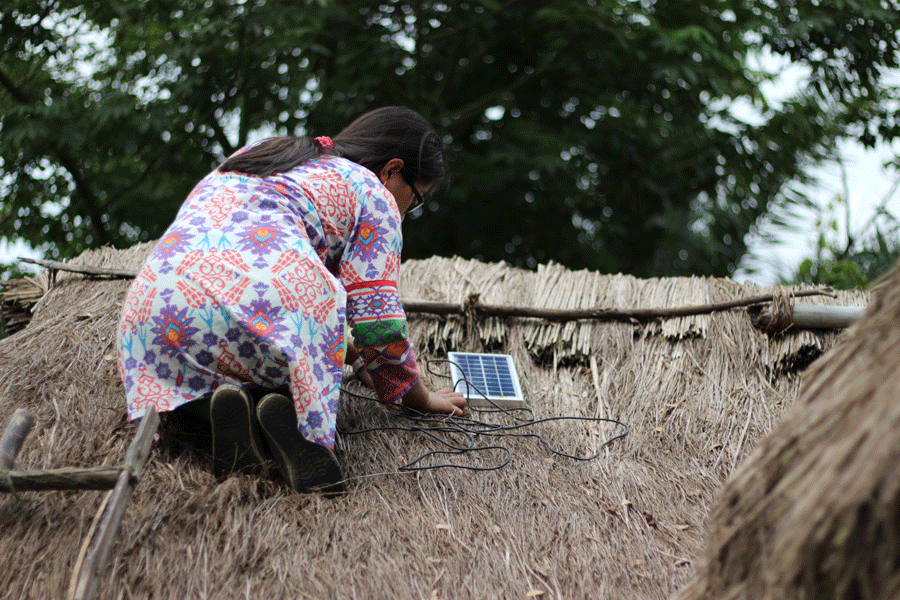From darkness to light
The remote hamlet of Kumirmari, tucked in the Sunderbans, had countless stories from its humble inmates for the Rotaract Club of Heritage Institute of Technology, D 3291. The Rotaractors installed solar lamps under Project Roshni, with support from their parent RC Calcutta Mahanagar, in 50 huts in the village during the first phase a few months ago.

After a hectic journey of 12 hours (2 hours by train, 4 hours by jeep, 5 hours on a ferry and a quick-sand trail) they were “enthralled by the stories the villagers had to relate — encounters with the Royal Bengal tiger, bee-keepers who risked their lives and mastered the art of collecting honey and tales of those who survived the wrath of high tides caused by the Aila cyclone,” says Rotaractor Anwesha Lahiri. “I am never going to forget the payesh (a local specialty) that was served to us when we arrived at the village, tired and exhausted,” she adds.

Rabindranath Banerjee, an elderly villager who lives with his wife and grandson, depends only on his paltry pension for survival. “I couldn’t imagine a 96-year-old, braving all odds and walking 5 km to collect his pension,” quips Anwesha. With the solar facility that enables mobile phone charging, Banerjee will now be able to “communicate with his bank effectively. Other villagers, who are daily wage earners, will now find jobs and work even after the sun goes down. Most important, they can now help their children read and write even in the dark,” she adds.

In a subsequent phase, 100 more solar lamps have been set up in the villagers’ homes. Now, over 300 houses, out of the 2,000, are lit by these solar-powered lights. The Rotaractors have planted over 1,000 saplings on the edge of the island and hope to continue helping the villagers.
